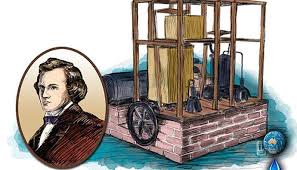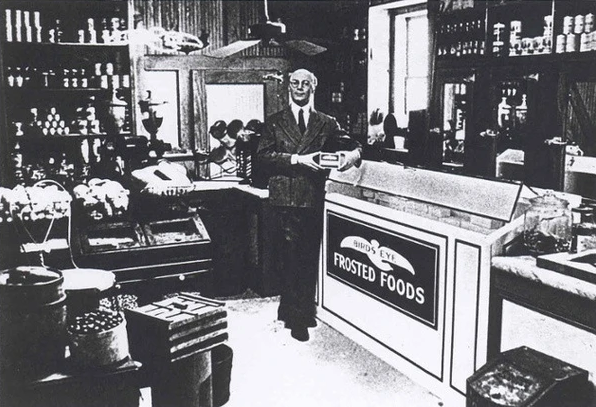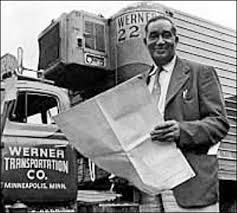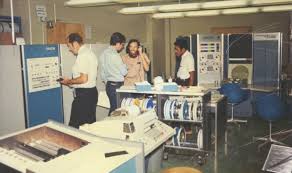
When I was working on my undergraduate degree back in the early 70s, I did a research paper on media convergence. At that time, we thought that convergence would occur around cable television. But not today.

Even in the 90s, the concept of media convergence seemed like the world of Jules Verne. People consumed each source of information, on its own separate platform. Print came in the form of a magazine or newspaper. Radio, via a reception device designed to pick up only AM or FM radio signals and television, through a big picture tube encased in a giant wooden cabinet. It was beyond most of our imaginations that print, radio and television would ever be delivered to us on a single device that we could carry in our pocket; like today’s smartphone.
Even more amazing is the fact that our smartphones can also publish our written thoughts, broadcast our spoken word and even transmit our pictures/videos to today’s global village.
Maybe even more shocking to us as Boomers, is the fact that the Millennial generation doesn’t even have memories of the fragmented media world we grew up with.
How Innovation Changes Our World
In order to try and help media people understand how innovation can change the world as we knew it, let’s take a look at how bringing “cold” to the south set-off a change reaction of change.

Two hundred years ago, if you lived in the south, there was no way to escape the heat. Frederick Tudor, Boston’s “Ice King” would spend a decade figuring out how to transport ice from New England to the south and even around the world. New England’s natural ice would become so treasured, that in the early 1900s, it would become America’s second largest export after cotton.

Then a physician, Dr. John Gorrie, wanted to try to cool the hospital rooms of his Florida hospital, in order to make his patients who were burning up from fever more comfortable in the sweltering heat of the south. Gorrie invented a refrigeration machine, and when he applied for a patent on his invention, he wrote: “Artificial cold might better serve mankind. Fruits, vegetables and meat, would be preserved in transit by my refrigeration system and thereby enjoyed by all.”


When ice fishing, Clarence Birdseye learned how the Inuit Indians of the north flash froze the fish they caught, by leaving them out in the frigid air. This caused their catch to be instantly frozen and allowed the Inuit to keep their catch fresh to eat at a later time. This inspired Birdseye to improve artificial refrigeration to enable the flash freezing of all kinds of produce, creating the frozen food industry.

Fred Jones, created refrigeration units that could be placed on tractor trailer trucks, shipping containers and railroad cars, allowing for long-haul transportation of perishable goods.
Innovation Eats Its Own
In the 1800s, having an idea to bring cold to a part of the world that was always hot, was considered an insane idea. Everyone thought Frederick Tudor was an oddball. His efforts to perfect the transportation and storage of natural ice at one point put him in debtors’ prison, but his persistence would eventually make him a very wealthy man, until the birth of mechanical refrigeration. Gorrie, Birdseye and Jones would bring an end to the natural ice industry, with their innovations in cold.
Big ideas don’t come from a “Eureka moment.” They come from one person asking themselves, “I wonder if…” From having a hunch that just won’t go away. Big ideas are created from many other people having small, incremental ideas, that then get networked together, and over time become the next big thing.
The Internet

Fifty-one years ago, at 10:30pm, the internet was born with the transfer of one simple message. Charley Kline, a student programmer at UCLA, would type the letters “L” and “O” and electronically send them more than 350 miles to the Stanford Research Institute’s computer in Menlo Park, California. The computer system immediately crashed after they were sent, but a communications revolution had begun.
Now if you think of analog communications as “natural ice” and digital communications as “artificial ice,” you can see it really isn’t unusual for new innovations to extinguish original big ideas.
While today, we’d never consider putting an old fashioned ice box in our modern kitchens, the business of selling ice still exists. I for one, still frequent my local convenience store’s ice box, to pick up a couple of bags of ice cubes for my picnic cooler.
Likewise, I think a need for a few local radio stations may remain, but only if they provide a unique and unduplicated service to their listeners.
But I also believe that the analog communication model will slowly fade into the background as new communication innovations come along and replace it.
AM/FM radio’s days, as we Boomers knew it, are numbered.

Dick, your viewpoint and mine finally converge. I lived thought the downfall of print media at Hearst Media. While there are many similarities to radio, each had its unique nuances. The downfall of print was forecast by its own think thank, Readership Institute, a decade in advance. Since I started following you, your blog has brought out excellent points that have provided a viable hyper local programming alternative. The problem was that the decision making was centralized at the networks executive suite-far removed from the audience. My next prediction is more fragmentation to micro niche audienes.
LikeLiked by 1 person
Victor, as consolidation in the radio industry was taking place, the ability of local management to make decisions was taken away to the consolidator’s peril.
When SEARS was the leader, it’s store managers had the full authority to operate as the final authority in their local market, there was no higher authority to plead your grievance to.
Friendly Ice Cream was founded the same way with their store managers being in charge as if they owned their store.
When consolidation changed that in both instances, we find SEARS and Friendly Ice Cream are but a memory as to how to run a company that is in touch with their local marketplace.
Radio, or newspapers, didn’t have a monopoly on making consolidation errors.
I think your prediction is already being rolled out via the internet. For radio, it is by streams and podcasting. For print, it’s online. I get the Washington Post that way and I like it.
Thanks for reading the blog and for sharing your experiences today.
-DT
LikeLike
I think AM radio will remain viable by continuing to provide the news and talk programming that has been its core strength since the 1980’s. It is simple to access and it is free. AM radio is especially useful in times of bad weather and power outages (as long as your car has one). As for FM, the only listenable music stations in my market is a commercial free college station that plays 60’s, 70’s, and 80’s pop hits with community bulletin board messaging, and an FM rock station that, although corporately owned, has been allowed to keep its local flavor with its own DJ’s and local news, traffic and weather. (We’ll see it this lasts.) There is also a sports radio FM station that simulcasts its AM counterpart in a kind of reprise of the 60’s where you’d hear an ID like “WABC AM and FM New York.” But just like linear TV, traditional media will survive albeit with smaller ratings and circulations. Think of the media world (broadcast, digital and dead tree) as a pizza whose diameter is growing as it is sliced into smaller and smaller pieces. Streamers are the wild-card exception. It remains to be seen how much of their recent and explosive gains can be sustained post Covid.
LikeLike
James, I really question the viability of AM radio as we knew it. All electric cars — and that’s where the auto/truck industry is headed at lightning speed — have eliminated AM radios in those vehicles. Those powerful news/talk radio stations you mention are all acquiring FM signals to maintain relevance. WTOP moved to the FM dial in January 2006 and has been the nation’s top billing radio station several years in a row, including the most recent.
In Europe, AM stations are signing off for good and FM stations are moving to DAB/DAB+.
While the number of places to advertise has grown exponentially, the ad pie of money spent has not. What it has done is move around to places deemed more effective.
In August of 2017 I wrote about how AM radio, like coal, isn’t coming back. You can read that article here: https://dicktaylorblog.com/2017/08/20/coal-aint-coming-back-neither-is-am-radio/
More recently, I wrote about the better advertising mousetrap and the challenge ahead for linear communication formats. You can read that article here: https://dicktaylorblog.com/2020/09/20/the-better-advertising-mousetrap/
Nothing stays the same, you are either moving forward or backwards.
Thanks for stopping by the blog and sharing your thoughts.
-DT
LikeLike
A little late, but better late than never, to this conversation. Most recently, Cumulus Media turned in the FCC licenses of two of its AM stations in Georgia-WBMQ (630) and WJLG (900)-both out of Savannah. If that wasn’t enough, WRWM (1500) in Macon also left the air for good earlier this year, as well as WHBT (1410) just across the state line in Tallahassee, Florida. So, yes, it appears that AM radio’s days are numbered. Merry Christmas and Happy New Year.
LikeLiked by 2 people
AM radio is like 78 rpm records, great when that’s all there was. But when something better comes along, things end up in a museum for people to understand the past that brought them to today.
Merry Christmas & Happy New Year to you as well.
-DT
LikeLiked by 1 person